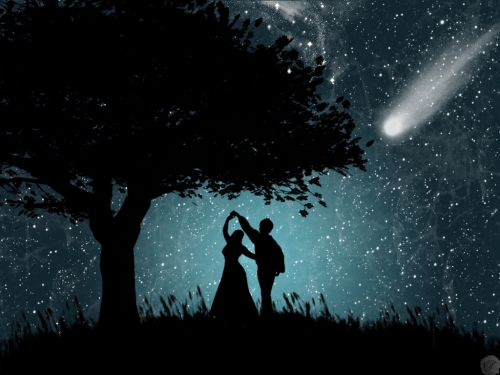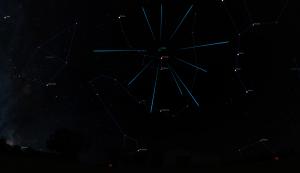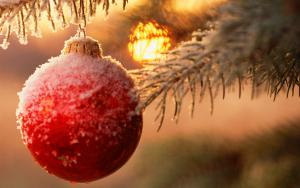
Holiday Stargazing
- Where:
- Frosty Drew Observatory
- When:
- Fri, Dec 20, 2019 7:00 pm - 10:00 pm
- Cost:
- $5 Suggested Donation per person 5 years and older
Tonight is our annual Holiday Stargazing Nights event, a night of stargazing to kick off the winter holiday, and forecasts are calling for clear skies and cold temps. The 24% waning crescent Moon does not rise until 2:00 am, leaving skies super dark for our entire stargazing revelry. After two consecutive weeks of rained out Fridays, tonight’s fabulous forecast will make up for it. Though clear, it will be COLD, with temps starting off in the mid 20’s and dropping into the teens overnight. Add in that we have a slight wind, at around 4mph, making that temp will feel about 10° colder. Regardless, this is New England, and to the apparent surprise of many, winter happens here.
We will open the Observatory, Sky Theatre, and Science Center at 7:00 pm tonight. In the Observatory, telescopes will start off with a view of the Messier 15 globular cluster, followed by a view of 61 Cygni – Piazzi’s Flying Star. As the night progresses, we will star hop along the stunning starscape hunting down numerous faint deep sky objects. On our list are the fabulous Orion Nebula, the Iris Nebula, Herschel’s Garnet Star, R-Lepus – the Vampire Star, NGC 2392 – formation of a white dwarf star, Messier 37 open star cluster, and more. In the Sky Theatre temps will be warm and on screen we will feature our showcase of celestial objects photographed at Frosty Drew Observatory. In the Science Center, the works of our astronomers are on gallery. We will stay open until 10:00 pm.
Overall, tonight looks like a fabulous night to be out. The only negative will be the cold temps. All forecasting sources are calling for clear skies tonight and with the Moon not rising until the early morning, we will have dark skies and thousands of stars to celebrate under. It’s important to note that dressing properly is required tonight! The Observatory building is not heated and is wide open to the environment. Dressing improperly not only keeps you cold and miserable, it also ruins the view in the telescope for all others in attendance as your much needed heat radiates into space through the open shutter of the observatory dome, blurring our view. The Frosty Drew astronomers wrote a primer on how to dress for cold nights at the Observatory, and we suggest you follow it! You can find it here. Now gear up and head out to Frosty Drew Observatory for a night out under the stars on the last night of autumn, and put the cosmos on your list of holiday activities as you kick off your week of revelries.
-----------------------------
Weekly Happenings
Scott MacNeill
This coming Thursday, December 26, 2019, a stunning annular solar eclipse will occur. Sadly, this event will not be visible for residents of North America, though you can catch it online. The eclipse will start over Saudi Arabia and continue over India, Indonesia, and across Asia. An annular eclipse happens when the Moon is closer to apogee (its furthest point from Earth in its orbit), and does not fully cover the visible area of the Sun. This results in what looks like and ring of fire in the sky, with the Moon blocking out the central region of the solar disk. The eclipse will start at 9:29 pm EST on December 25th, with maximum eclipse happening at 12:17 am EST, lasting for about 3 minutes and 40 seconds. You can watch the event live, compliments of Slooh. The broadcast starts at 9:30 pm EST and continues until the eclipse ends, at 3:05 am EST.
Overnight Sunday, December 22-23, 2019, the annual Ursid Meteor Shower will peak. A rather slow going meteor shower, the Ursids will bring an increase in regular meteor activity of about 10 meteors per hour. Considering that the Moon will be practically non-existent that night, rising at 4:21 am as a super thin 8% waning crescent, the skies will be perfect for meteor watching. Weather at this time for Southern New England, looks pretty good, with cloudy skies present during the nighttime hours, clearing out around midnight. Considering the morning hours are the best times to catch the shower, this puts us in the clear. The Ursid meteor shower is the result of Comet 8P/Tuttle, a periodic comet with an orbital period of 13.6 years. As 8P/Tuttle orbits the Sun, it crosses Earth’s orbit and leaves a debris field of tiny dust – rice sized particles of ice behind. When Earth orbits through this debris field, the particles are captured in Earth’s gravity and enter the atmosphere at rates of about 20 miles per second, and burn up. Meteors will appear to radiate from the bright star Kochab in the constellation Ursa Minor. If setting out to watch the Ursid shower, plan to arrive at dark location, free of artificial light, and be there for about 1:00 am. Lay on your back with your feet to the North and look to the zenith (top of the sky). This shower is not as active at the Geminids, Quadrantids, or Perseids, though with the meteor shower weather attack of 2019, we have to take what we get. If you catch a photo of an Ursid meteor, be sure to post it on the Visitor Posts section of our Facebook page and we’ll share it on our timeline. Note, we will not share photos of airplanes, even if you think it’s a meteor.
Tomorrow, Saturday, December 21, 2019 at 11:19 pm EST, Earth will reach the point in its orbit where the Northern Hemisphere will be at maximum tilt (23.4°) away from the Sun. This is the Winter Solstice and marks the first day of winter in the Northern Hemisphere. On the Winter Solstice, we will experience our shortest daytime period of the year in the Northern Hemisphere. Locations north of the Arctic Circle will have 24 hours of night with corresponding locations south of the Antarctic Circle experiencing 24 hours of daylight. In the Southern Hemisphere the Sun will cross the zenith (directly overhead) along the Tropic of Capricorn, resulting in the Sun crossing the sky 23.4° below Earth’s equator. All that aside, the Winter Solstice brings all the fabulous celebrations we have during this time of the year. It’s a harbinger of the cold long dark ahead as we descend into the winter, though also the point that the days start to get longer as we begin our shift towards the warmer season. So take a moment at noon tomorrow to step outside and notice how low the Sun is in the sky and welcome the reason for the season as we make our final plunge into holiday bliss.
Have a fabulous Winter Solstice from all the astro-geeks at Frosty Drew Observatory!
-Scott
Check out our page on Visiting Frosty Drew Observatory to learn more about what to expect at the Observatory and better help you prepare for your visit.
Please note that we do not allow any white lights on our campus from dusk - dawn. This is to ensure an equally awesome view of the night sky for all as well as to allow for the use of light sensitive astronomical equipment. Learn more about why we have this requirement in The Red Light District

_1576862083.jpg)

